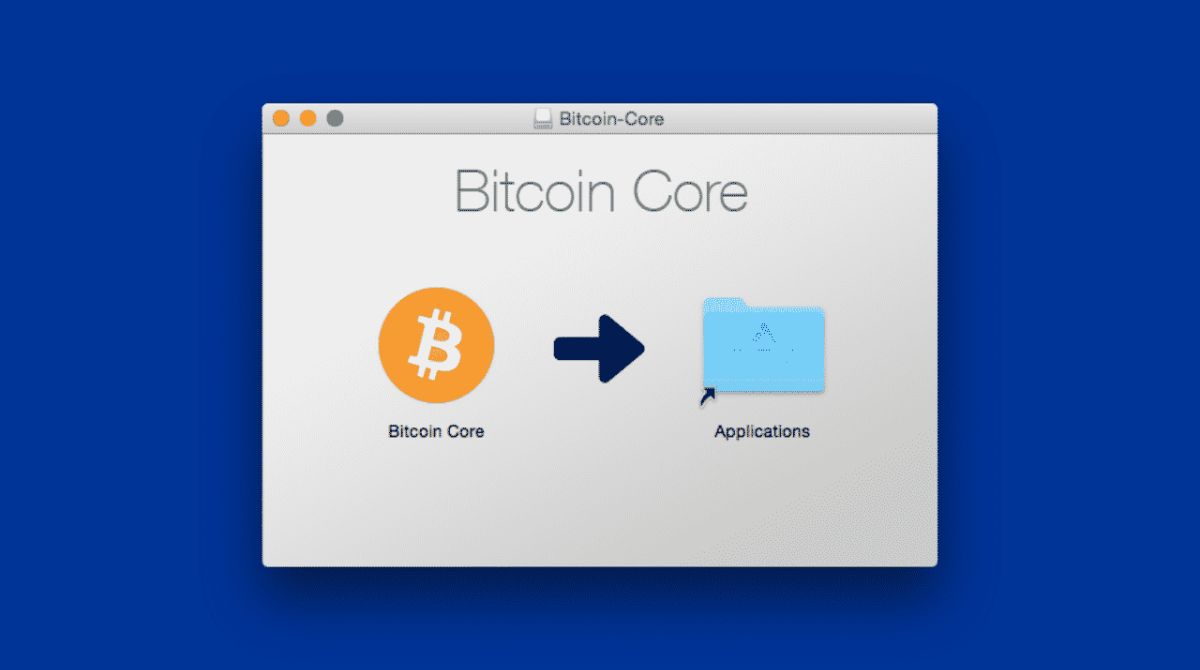Introduction
Welcome to the world of cryptocurrencies and blockchain technology. One of the most popular and widely known cryptocurrencies is Bitcoin, which has taken the financial world by storm. But what exactly is Bitcoin, and how does it work? To understand Bitcoin, we need to delve into the concept of blockchain.
Bitcoin was created in 2009 by an anonymous person or group of people using the pseudonym Satoshi Nakamoto. It is a decentralized digital currency that operates without the need for a central bank or government. Bitcoin is based on a technology called blockchain, which is a public ledger that records all Bitcoin transactions.
Blockchain technology is revolutionary because it allows for secure, transparent, and tamper-resistant records of transactions. It eliminates the need for intermediaries like banks and enables peer-to-peer transactions. The blockchain is essentially a chain of blocks, where each block contains a list of transactions.
The Bitcoin blockchain is the specific implementation of blockchain technology that powers the Bitcoin network. It ensures the transparency and security of all Bitcoin transactions, making it a trusted and reliable system for digital transactions. The Bitcoin blockchain is maintained by a network of computers, known as nodes, which validate and store the transaction data.
Now, you might be wondering how the Bitcoin blockchain actually works. Well, let’s explore the inner workings of this fascinating technology. But before we dive into the technical details, let’s discuss the advantages and disadvantages of the Bitcoin blockchain.
What is Bitcoin?
Bitcoin is a digital currency that was introduced in 2009 by an anonymous person or group of people under the pseudonym Satoshi Nakamoto. It operates on a decentralized network called the Bitcoin blockchain, which allows for peer-to-peer transactions without the need for intermediaries like banks.
Unlike traditional fiat currencies, such as the US Dollar or the Euro, Bitcoin is not issued or regulated by any central authority. Instead, it is generated through a process called mining. Miners use powerful computers to solve complex mathematical problems, and in return, they are rewarded with newly created bitcoins.
Bitcoin transactions are conducted using cryptographic techniques to ensure security and privacy. Each user has a unique cryptographic key, consisting of a public key and a private key. The public key is used to receive funds, while the private key is used to sign transactions and prove ownership of the bitcoins.
One of the key features of Bitcoin is its limited supply. There will only ever be 21 million bitcoins in existence, which makes it a deflationary currency. This scarcity has contributed to the increase in its value over time, making it an attractive investment option for many.
Bitcoin transactions are recorded on the blockchain, which is a decentralized and transparent ledger. Every transaction is verified by multiple nodes on the network, ensuring its validity and preventing double spending.
Bitcoin can be used for a variety of purposes, including online purchases, remittances, and investment. Its global nature and decentralized nature make it an appealing option for individuals who want to bypass traditional financial systems or live in countries with unstable economies.
While Bitcoin has gained significant popularity and acceptance over the years, it is important to note that it is still a relatively new and evolving technology. Its value can be volatile, and there are regulatory and security concerns that need to be addressed.
In the next section, we will explore the fundamentals of blockchain technology and how it powers the Bitcoin network.
What is Blockchain?
Blockchain is a revolutionary technology that serves as the backbone of cryptocurrencies like Bitcoin. It is a decentralized, transparent, and tamper-resistant ledger that records all transactions in a secure and verifiable manner. The concept of blockchain can be quite complex, but at its core, it is a chain of blocks, each containing a list of transactions.
Unlike traditional centralized databases, where a single entity controls and maintains the database, a blockchain is made up of a network of computers called nodes. These nodes work together to validate and record transactions, creating a decentralized and distributed ledger.
Each block in a blockchain contains a unique identifier called a hash. This hash is created by performing a cryptographic function on the data within the block. The hash of each block also includes the hash of the previous block, creating a chain of blocks that are linked together.
One of the key features of blockchain technology is its immutability. Once a block is added to the blockchain, it is extremely difficult to alter or delete the data within it. This makes blockchain highly secure and resistant to fraud or manipulation.
Another important aspect of blockchain is its transparency. Since the entire transaction history is stored on the blockchain, anyone can view the transactions and verify their authenticity. This transparency promotes trust and accountability in the system.
Blockchain technology is not limited to cryptocurrencies. It has the potential to revolutionize various industries, including finance, supply chain management, healthcare, and more. By providing a secure, transparent, and decentralized infrastructure, blockchain can streamline processes, reduce costs, and enhance efficiency.
It is worth noting that there are different types of blockchains, including public, private, and consortium blockchains. Public blockchains, like the Bitcoin blockchain, are open to anyone and can be accessed and viewed by anyone. Private blockchains, on the other hand, are restricted to a specific group of participants, offering more privacy and control. Consortium blockchains are a hybrid of public and private blockchains, where a group of organizations work together to maintain the blockchain.
In summary, blockchain is a groundbreaking technology that underpins cryptocurrencies like Bitcoin. It offers decentralization, transparency, and immutability, making it a powerful tool with numerous applications across various industries.
The Bitcoin Blockchain
The Bitcoin blockchain is the specific implementation of blockchain technology that powers the Bitcoin network. It was designed to facilitate transparent and secure digital transactions without the need for intermediaries like banks. The Bitcoin blockchain is a decentralized and distributed ledger that records all Bitcoin transactions.
Every transaction on the Bitcoin network is grouped into blocks, which are added to the blockchain in a sequential and chronological order. Each block contains a list of transactions, along with a unique identifier called a hash. The hash of each block is generated using a cryptographic algorithm and includes the hash of the previous block, creating a chain of blocks.
One of the key features of the Bitcoin blockchain is its security. Once a block is added to the blockchain, it becomes extremely difficult to alter or delete the data within it, ensuring the integrity of the transaction history. Additionally, the Bitcoin blockchain uses a consensus mechanism called Proof of Work, which requires miners to solve challenging mathematical puzzles to validate transactions and add them to the blockchain.
The Bitcoin blockchain is maintained by a network of computers, known as nodes. These nodes collaborate to verify and store the transaction data, ensuring that the blockchain remains decentralized and resilient to attacks. Each node has a copy of the entire blockchain, allowing for redundancy and preventing a single point of failure.
Another important aspect of the Bitcoin blockchain is its transparency. All transactions on the blockchain are public and can be viewed by anyone. This transparency promotes trust and allows users to verify the authenticity of transactions.
Furthermore, the Bitcoin blockchain provides pseudonymity. While the transactions are public, the identities of the parties involved are represented using cryptographic keys, ensuring a certain level of privacy. However, it is important to note that Bitcoin transactions are not completely anonymous, as transaction patterns and other factors can be analyzed to infer the identities of individuals.
The Bitcoin blockchain has proven to be reliable and secure since its inception in 2009. It has successfully facilitated billions of dollars in transactions without compromising its integrity. However, it is not without its limitations.
In the next section, we will explore how the Bitcoin blockchain actually works and the mechanisms behind its operation.
How Does the Bitcoin Blockchain Work?
The Bitcoin blockchain is a decentralized and distributed ledger that allows for secure and transparent digital transactions. To understand how it works, let’s dive into the fundamental mechanisms behind its operation.
1. Transaction Initiation: The process begins when a Bitcoin user initiates a transaction. This transaction includes the sender’s and recipient’s addresses, the amount of Bitcoin being transferred, and a digital signature to prove ownership of the coins.
2. Transaction Verification: Once initiated, the transaction is broadcasted to the Bitcoin network, where it is received by multiple nodes. These nodes then independently verify the transaction for its validity and consistency with the existing ledger. Verification includes checking if the sender has sufficient funds and ensuring that the transaction has not already been spent.
3. Consensus Mechanism: To maintain the integrity of the blockchain, consensus must be reached among the nodes on which transactions should be included in the next block. The Bitcoin blockchain uses a consensus mechanism called Proof of Work (PoW). Miners compete to solve complex mathematical puzzles, and the first one to find the solution earns the right to add the next block of transactions to the blockchain. This process requires a significant amount of computational power and electricity.
4. Block Formation: Once a miner successfully solves the puzzle, they gather a group of valid transactions and create a new block. The block contains the hash of the previous block, ensuring the chain’s continuity. The miner then broadcasts the new block to the network for further verification.
5. Block Validation: Upon receiving the new block, nodes independently validate its contents and check its adherence to the blockchain’s rules. This includes confirming that the transactions are valid and the miner solved the puzzle correctly. If the block passes validation, it is added to the blockchain, and the transactions become a permanent part of the ledger.
6. Confirmations: As more blocks are added to the blockchain, the transaction becomes more secure. Each subsequent block after the one containing the transaction adds another layer of confirmation. Generally, it is recommended to wait for several confirmations (often six) before considering a transaction as fully confirmed and irreversible.
7. Ledger Maintenance: Nodes that participate in the Bitcoin network continuously maintain a copy of the entire blockchain. By doing so, they contribute to the network’s decentralization, as there is no central authority controlling the ledger. Updates to the blockchain are propagated to all nodes, ensuring consensus and consistency among participants.
The Bitcoin blockchain operates on cryptography, decentralization, and consensus to ensure security and accuracy. It provides a trustless system for digital transactions without the need for intermediaries, making it a groundbreaking innovation in the world of finance.
In the next sections, we will explore the advantages and disadvantages of the Bitcoin blockchain and discuss its impact on various industries.
Advantages of the Bitcoin Blockchain
The Bitcoin blockchain offers numerous advantages that have contributed to its widespread adoption and success. Let’s explore some of the key benefits of this revolutionary technology.
1. Decentralization: One of the primary advantages of the Bitcoin blockchain is its decentralized nature. The absence of a central authority or intermediary, such as a bank or government, means that transactions can be conducted directly between individuals. This eliminates the need for third-party oversight and control, providing greater autonomy and security for users.
2. Transparency: The Bitcoin blockchain operates on a public ledger, meaning that all transactions are visible and traceable by anyone. This transparency promotes trust and accountability, as transactions can be verified and audited by anyone with access to the blockchain. It also reduces the risk of fraud and corruption, as the transaction history is securely recorded and cannot be altered without consensus from the network.
3. Security: Security is a key advantage of the Bitcoin blockchain. The use of cryptographic techniques ensures that transactions are secure and tamper-resistant. Each transaction is verified by multiple nodes, making it virtually impossible for malicious actors to manipulate the blockchain. Additionally, the decentralized nature of the network means that there is no single point of failure, making it highly resilient to attacks.
4. Efficiency and Speed: Traditional financial transactions can often be slow and cumbersome, involving intermediaries and bureaucratic processes. In contrast, Bitcoin transactions on the blockchain are typically faster, as they bypass many of these intermediaries. Transactions can be conducted within minutes, regardless of geographical location, providing a more efficient and streamlined process for users.
5. Lower Costs: The removal of intermediaries in Bitcoin transactions can lead to lower costs for users. Traditional financial systems may involve fees for services such as wire transfers, currency conversions, and account maintenance. In contrast, Bitcoin transactions typically have lower fees, making it an attractive option for individuals and businesses seeking to reduce transaction costs.
6. Accessibility: The use of the Bitcoin blockchain is not limited by geographical boundaries or restrictive banking systems. Anyone with access to the internet and a digital wallet can participate in the Bitcoin network. This accessibility allows for financial inclusion, particularly in underbanked regions or for individuals who face obstacles in accessing traditional banking services.
7. Innovation and Potential: The Bitcoin blockchain has paved the way for the development of new financial instruments and applications. Smart contracts, for example, are self-executing contracts stored on the blockchain that can automate and facilitate various types of agreements. The potential for innovation is vast, and the Bitcoin blockchain serves as a foundation for exploring new possibilities in finance and other industries.
The advantages offered by the Bitcoin blockchain have significant implications for individuals, businesses, and the global financial system. However, it is essential to recognize that there are also challenges and limitations associated with this technology, which we will discuss in the next section.
Disadvantages of the Bitcoin Blockchain
While the Bitcoin blockchain offers numerous advantages, it also comes with its fair share of disadvantages and challenges. Let’s take a closer look at some of the key drawbacks of this revolutionary technology.
1. Scalability: Scalability has been a long-standing issue for the Bitcoin blockchain. As the number of transactions increases, the network can become congested, leading to slower transaction confirmation times and higher fees. The limited block size and the Proof of Work consensus mechanism contribute to this scalability challenge, requiring ongoing efforts to improve the capacity and efficiency of the network.
2. Energy Consumption: The process of mining Bitcoin and validating transactions requires a significant amount of energy. The computational power required for Proof of Work consensus consumes a substantial amount of electricity, leading to concerns about the environmental impact of Bitcoin mining. Efforts are being made to explore alternative consensus mechanisms, such as Proof of Stake, which consume less energy.
3. Volatility: Bitcoin is known for its price volatility, which can be both an advantage and a disadvantage. While the potential for high returns on investment can attract speculators, it also poses risks for individuals and businesses that rely on stable value for everyday transactions. The fluctuating value of Bitcoin can create uncertainty and make it challenging to use as a reliable medium of exchange.
4. Regulatory Challenges: The decentralized nature of the Bitcoin blockchain presents regulatory challenges for governments and financial institutions. The lack of a central authority can make it difficult to enforce regulations, combat money laundering, or prevent illicit activities. As a result, there is an ongoing need to strike a balance between preserving privacy and security while adhering to regulatory requirements.
5. User Error and Loss of Funds: The use of Bitcoin requires a certain level of technical knowledge and responsibility. The decentralized and irreversible nature of transactions means that if a user makes a mistake, such as sending funds to the wrong address or losing their private key, it may result in the permanent loss of funds. Users must take extra precautions to secure their wallets and be mindful of the risk of human error.
6. Perception and Adoption: Despite the growing acceptance of Bitcoin and blockchain technology, there is still a perception challenge associated with cryptocurrencies. Some individuals may view Bitcoin as a speculative asset or associate it with illegal activities due to its early association with the dark web. This perception presents a barrier to widespread adoption and acceptance in mainstream society.
7. Technical Complexity: Understanding and navigating the intricacies of the Bitcoin blockchain can be challenging for individuals who are not technologically savvy. The concept of cryptography, private keys, and wallets can be intimidating for newcomers. Simplifying user interfaces and providing educational resources are crucial for enhancing the accessibility and usability of the technology.
Despite these disadvantages, the Bitcoin blockchain continues to evolve and address its shortcomings. Ongoing research and development, as well as advancements in consensus mechanisms, scalability solutions, and user-friendly interfaces, aim to overcome these challenges and realize the full potential of blockchain technology.
Conclusion
The Bitcoin blockchain has revolutionized the way we think about finance, transactions, and trust. It introduced the concept of a decentralized and transparent ledger, powered by a network of computers working together to validate and record transactions. The advantages of the Bitcoin blockchain, such as decentralization, transparency, security, and efficiency, have made it a game-changer in the financial world.
However, it is important to acknowledge that the Bitcoin blockchain also faces challenges. Scalability, energy consumption, volatility, regulatory concerns, user error, perception, and technical complexity are all factors that need to be addressed for widespread adoption and acceptance.
Nonetheless, the impact of the Bitcoin blockchain extends far beyond the realm of currency. Industries like finance, supply chain management, healthcare, and beyond are exploring the potential of this technology to streamline processes, reduce costs, and enhance security.
As the Bitcoin blockchain continues to mature and evolve, it is crucial for stakeholders, including developers, regulators, and users, to collaborate and find innovative solutions to address its limitations. Improvements in scalability, energy efficiency, regulation, user experience, and education will drive the further integration of blockchain technology into our everyday lives.
The journey of the Bitcoin blockchain has just begun, and its potential is vast. As more individuals, businesses, and governments recognize the benefits and opportunities it offers, we can expect to see continued advancements that reshape our global financial landscape.
So, whether you are a cryptocurrency enthusiast, a tech-savvy individual, or a curious observer, the Bitcoin blockchain is undoubtedly a fascinating technology that has disrupted traditional financial systems and paved the way for a more decentralized and transparent future.

























